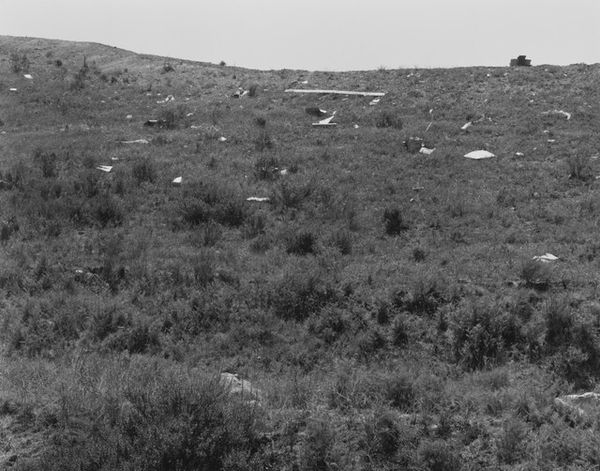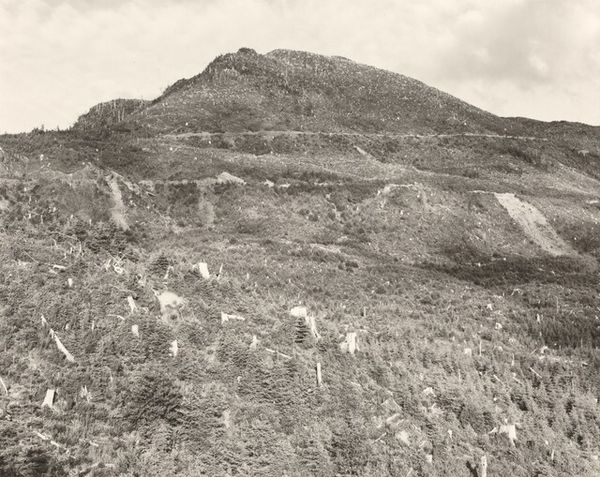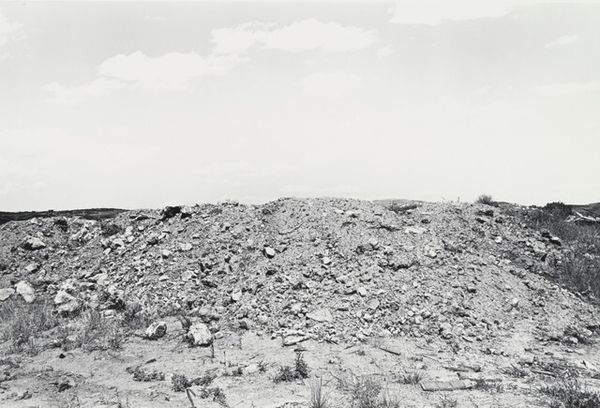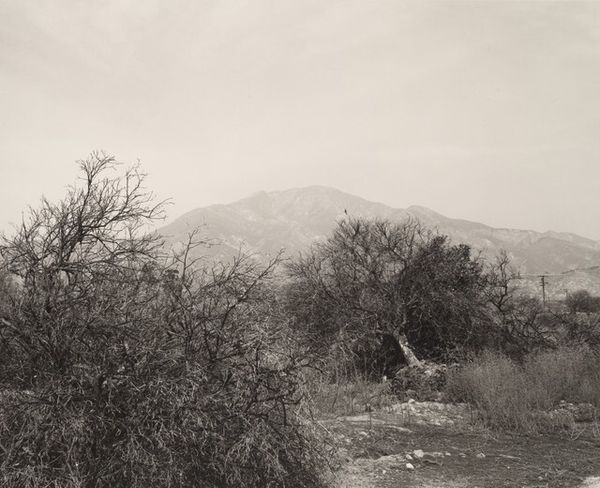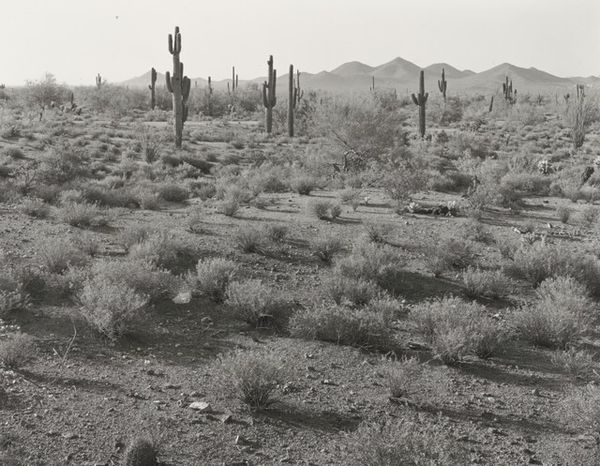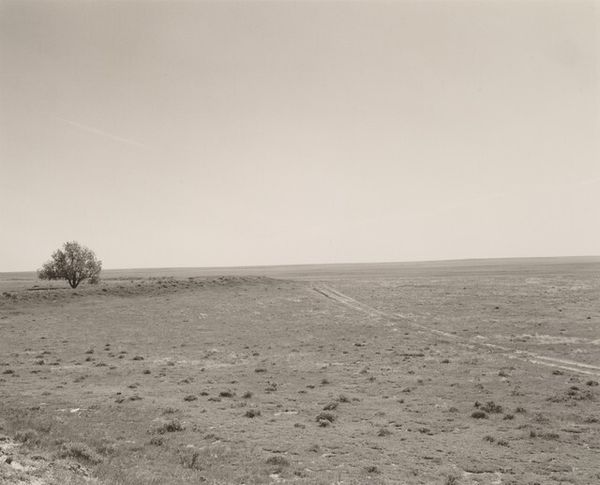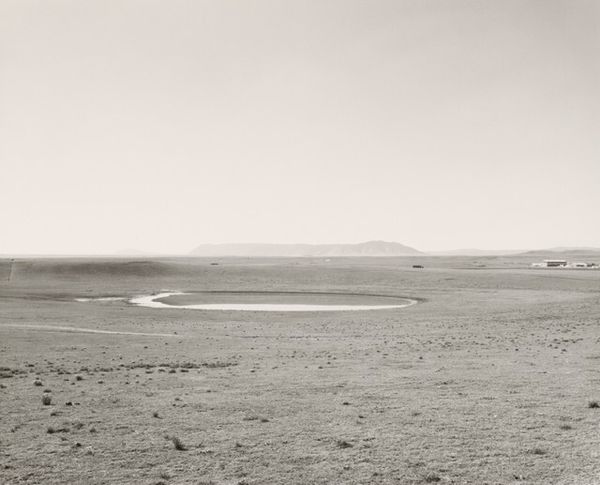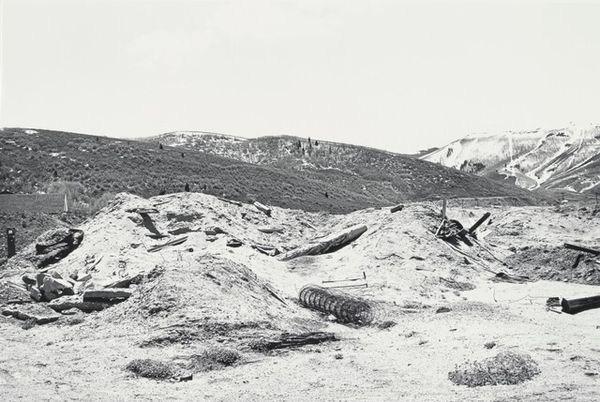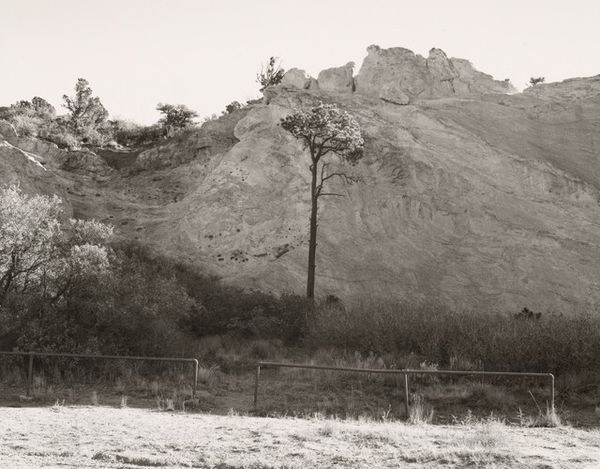
Phoenix, I-17 and Pioneer Road, Area to be Subdivided Within the Year, Looking South 2000
0:00
0:00
photography
#
contemporary
#
black and white photography
#
landscape
#
black and white format
#
street-photography
#
photography
#
black and white
#
monochrome photography
#
monochrome
#
monochrome
Dimensions: image: 27.94 × 35.24 cm (11 × 13 7/8 in.) sheet: 40.64 × 50.48 cm (16 × 19 7/8 in.)
Copyright: National Gallery of Art: CC0 1.0
Curator: Allen Dutton's stark black and white photograph, titled "Phoenix, I-17 and Pioneer Road, Area to be Subdivided Within the Year, Looking South," taken in 2000, captures a very specific moment in time. Editor: It evokes such a quiet desolation. The monochrome rendering really emphasizes the textures, almost a wasteland punctuated only by stubborn, low shrubs. Curator: Indeed, the starkness pulls the eye in many directions, particularly with how the I-17 cuts right across the horizon line dividing landscape and sky. To me the photo communicates so much tension through the presence of a road that almost symbolizes a rupture. Editor: It's hard to miss the symbolic weight there, right? The road and the implicit subdivision feels like a premonition of environmental disruption. The work quietly asks: who really benefits from progress if we just homogenize every unique ecosystem? Curator: Thinking symbolically about a 'phoenix' always rising and reforming suggests the transformation is inevitable, perpetual even. But, one could also look at the phoenix myth through a more cynical, and perhaps more modern, lens; it speaks about cycles of constant destruction that lead to rebirth, potentially ignoring the true cost of these cycles. Editor: Absolutely. Consider Dutton's pointed naming of the landscape as an ‘area to be subdivided within the year’. He's inviting us to consider this imminent violence done to the land. What cultural narratives do we reinforce when we prioritize expansion at any cost? Curator: What resonates most powerfully is Dutton's focus on liminality – that space between the present landscape and its future paved-over existence. This mirrors cycles and passages we recognize across many cultures through art history where natural lands, such as in classic landscape painting, become mirrors reflecting our innermost values. Editor: This resonates. What’s striking about the image’s overall effect is this looming sense of irreparable loss, a permanent severing. Curator: The visual echoes are haunting and timeless and perhaps push beyond this particular landscape to hint at deeper, systemic issues that shape the fate of wild and fragile landscapes. Editor: It leaves you contemplating our accountability within these ceaseless cycles of change, pressing one to really examine and critique the existing paradigm.
Comments
No comments
Be the first to comment and join the conversation on the ultimate creative platform.
